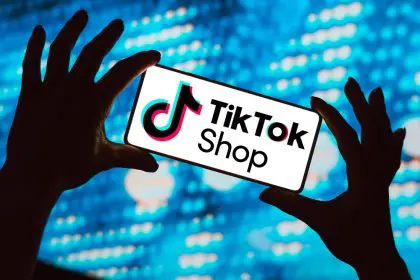The digital marketing landscape has undergone a dramatic transformation in 2025, presenting both unprecedented opportunities and complex challenges for businesses seeking to connect with their audiences. Traditional marketing approaches that once guaranteed success now struggle to capture attention in an increasingly saturated online environment where consumers demand authentic, personalized experiences.
Modern consumers have evolved into sophisticated digital natives who can instantly identify and dismiss generic marketing messages. They crave genuine connections with brands that understand their individual needs, preferences, and values. This shift has fundamentally altered how successful companies approach their marketing strategies, requiring a complete reimagining of customer engagement tactics.
The most successful brands in 2025 have discovered that effective digital marketing requires a delicate balance between cutting-edge technology and human-centered storytelling. They leverage advanced tools and platforms while maintaining authentic voices that resonate with their target audiences on emotional levels.
1. Artificial intelligence-powered personalization transforms customer experiences
The integration of artificial intelligence into digital marketing has reached new heights in 2025, enabling brands to deliver hyper-personalized experiences at unprecedented scale. Advanced machine learning algorithms now analyze vast amounts of customer data to predict preferences, behaviors, and purchasing patterns with remarkable accuracy.
Smart personalization engines automatically adjust website content, product recommendations, email campaigns, and social media interactions based on individual user profiles. These systems continuously learn from customer interactions, refining their understanding of each user’s preferences and delivering increasingly relevant experiences over time.
Dynamic content optimization has become particularly powerful, allowing websites to instantly adapt their messaging, imagery, and layout based on visitor demographics, location, device type, and browsing history. This level of customization creates the impression that each website visit is uniquely tailored to the individual user’s needs and interests.
Predictive analytics capabilities enable marketers to anticipate customer needs before they’re explicitly expressed, allowing brands to present relevant solutions at precisely the right moments in the customer journey. This proactive approach significantly improves conversion rates while enhancing overall customer satisfaction.
2. Interactive content strategies drive unprecedented engagement levels
Static content has largely given way to interactive experiences that actively involve audiences in meaningful ways. Quizzes, polls, assessments, calculators, and interactive videos now dominate successful marketing campaigns, transforming passive content consumption into engaging, participatory experiences.
Interactive storytelling has emerged as a particularly effective technique, allowing audiences to influence narrative outcomes through their choices and actions. This approach creates deeper emotional connections while providing valuable insights into customer preferences and decision-making processes.
Gamification elements integrated into marketing campaigns have proven remarkably effective at maintaining audience attention and encouraging repeat engagement. Point systems, achievement badges, leaderboards, and progress tracking mechanisms tap into fundamental human motivations for competition and accomplishment.
Virtual and augmented reality experiences have become more accessible and affordable, enabling brands to create immersive environments where customers can interact with products and services in previously impossible ways. These technologies are particularly effective for industries like real estate, fashion, automotive, and home improvement.
3. Voice search optimization reshapes content strategies
The proliferation of smart speakers, voice assistants, and voice-enabled devices has fundamentally changed how people search for information online. Successful brands have adapted their content strategies to accommodate natural language queries and conversational search patterns.
Long-tail keyword optimization has become increasingly important as voice searches tend to be more specific and conversational than traditional text-based queries. Content creators now focus on answering complete questions rather than simply targeting individual keywords.
Local search optimization has gained particular significance in voice search, as many voice queries involve location-based requests for nearby businesses, services, or information. Brands have invested heavily in optimizing their local listings and ensuring consistent information across all online directories.
Featured snippet optimization has become a critical component of voice search strategies, as virtual assistants frequently read featured snippets aloud when responding to voice queries. This has led to increased focus on creating concise, authoritative answers to common customer questions.
4. Social commerce integration streamlines purchase journeys
The boundaries between social media engagement and e-commerce transactions have virtually disappeared in 2025. Social platforms now offer seamless shopping experiences that allow customers to discover, research, and purchase products without leaving their preferred social environments.
Shoppable posts have evolved beyond simple product tags to include detailed product information, customer reviews, size guides, and comparison features. These enhanced shopping experiences reduce friction in the purchase process while maintaining the social context that influences buying decisions.
Live commerce events have gained tremendous popularity, combining entertainment with real-time shopping opportunities. Brands host live streaming sessions featuring product demonstrations, expert advice, and exclusive offers that create urgency and encourage immediate purchases.
Social proof integration has become more sophisticated, with platforms displaying real-time purchase notifications, customer reviews, and user-generated content directly within shopping interfaces. This social validation significantly influences purchase decisions and builds trust with potential customers.
5. Video content dominance requires strategic adaptation
Video content has become the primary medium for digital communication, with audiences consistently preferring video over text-based content across all platforms and demographics. Successful brands have developed comprehensive video strategies that span multiple formats and platforms.
Short-form vertical videos have emerged as the most engaging content format, particularly among younger demographics. These bite-sized videos deliver maximum impact in minimal time, making them ideal for capturing attention in fast-paced social media environments.
Educational and tutorial content has proven exceptionally effective at building authority and trust while providing genuine value to audiences. How-to videos, product demonstrations, and expert insights position brands as helpful resources rather than purely promotional entities.
Behind-the-scenes content has gained popularity as audiences seek authentic connections with brands. These videos humanize companies by showcasing team members, production processes, company culture, and the stories behind products or services.
6. Influencer partnerships evolve toward authentic collaborations
The influencer marketing landscape has matured significantly, moving away from superficial celebrity endorsements toward authentic partnerships with content creators who genuinely align with brand values and target audiences.
Micro and nano-influencers have gained prominence due to their highly engaged, niche audiences and authentic relationships with followers. These partnerships often deliver better return on investment than collaborations with mega-influencers who may have broader but less engaged audiences.
Long-term brand ambassador programs have replaced one-off sponsored posts, allowing for deeper storytelling and more authentic integration of products or services into influencers’ content. These ongoing relationships build stronger associations between influencers and brands.
Performance-based partnerships have become more common, with compensation structures tied to actual results rather than just reach or impressions. This approach ensures that both brands and influencers are incentivized to create content that drives meaningful engagement and conversions.
7. Email marketing renaissance through advanced automation
Email marketing has experienced a remarkable renaissance in 2025, powered by sophisticated automation technologies that deliver highly personalized, timely, and relevant messages to subscribers.
Behavioral trigger campaigns automatically send targeted emails based on specific customer actions or inactions, such as abandoned cart reminders, post-purchase follow-ups, or re-engagement campaigns for inactive subscribers.
Dynamic content insertion allows single email templates to display different content, images, and offers based on individual recipient characteristics, preferences, and behaviors. This personalization significantly improves open rates, click-through rates, and conversion rates.
Advanced segmentation capabilities enable marketers to create highly specific audience groups based on complex combinations of demographic, behavioral, and psychographic data. This precision targeting ensures that each subscriber receives the most relevant content possible.
8. Community building strategies foster brand loyalty
Successful brands have recognized that building engaged communities around their products, services, or missions creates more sustainable value than traditional advertising approaches. These communities become powerful engines for word-of-mouth marketing and customer retention.
Exclusive membership programs offer special benefits, early access to products, behind-the-scenes content, and direct communication with brand representatives. These programs make customers feel valued and create incentives for continued engagement.
User-generated content campaigns encourage community members to create and share content featuring brand products or services. This approach simultaneously provides authentic marketing materials while strengthening community bonds and brand loyalty.
Expert-led discussions and educational content help establish brands as thought leaders within their industries while providing genuine value to community members. This positioning builds trust and credibility that translates into increased sales and customer retention.
9. Mobile-first optimization becomes non-negotiable
Mobile devices now account for the majority of internet traffic, making mobile-first design and optimization essential for digital marketing success. Brands that fail to prioritize mobile experiences risk losing significant portions of their potential audiences.
Progressive web applications combine the best features of websites and mobile apps, offering fast loading times, offline functionality, and app-like user experiences without requiring downloads from app stores.
Mobile payment integration has streamlined the purchase process, allowing customers to complete transactions quickly and securely using their preferred mobile payment methods. This convenience significantly reduces cart abandonment rates.
Location-based marketing capabilities leverage mobile device GPS data to deliver targeted messages and offers based on users’ physical locations. This approach is particularly effective for retail businesses and service providers with physical locations.
10. Data privacy compliance builds consumer trust
Growing consumer awareness of data privacy issues has made transparent, ethical data practices a competitive advantage rather than just a compliance requirement. Brands that prioritize privacy protection often enjoy higher levels of customer trust and loyalty.
First-party data collection strategies focus on gathering information directly from customers through opt-in forms, surveys, and interactive content. This approach provides more reliable data while demonstrating respect for customer privacy preferences.
Transparent communication about data usage, storage, and sharing practices helps build trust with customers who are increasingly concerned about how their personal information is handled by businesses.
Cookie-free tracking alternatives have been developed to provide marketing insights while respecting user privacy preferences. These solutions use contextual advertising, first-party data, and privacy-preserving technologies to maintain marketing effectiveness.
11. Omnichannel integration creates seamless experiences
Successful brands have eliminated silos between different marketing channels, creating cohesive experiences that follow customers across touchpoints and platforms. This integration ensures consistent messaging while maximizing the impact of each customer interaction.
Cross-channel retargeting campaigns reach customers with consistent messages across multiple platforms, reinforcing brand awareness and increasing the likelihood of conversion through repeated exposure.
Unified customer profiles combine data from all touchpoints to create comprehensive views of individual customers, enabling more personalized and effective marketing communications across all channels.
Consistent brand messaging and visual identity across all platforms reinforce brand recognition and build trust through familiarity and reliability.
12. Sustainability messaging resonates with conscious consumers
Environmental and social responsibility have become significant factors in consumer decision-making, making authentic sustainability messaging an important component of successful digital marketing strategies.
Transparent reporting about environmental impact, social initiatives, and ethical business practices helps build trust with increasingly conscious consumers who want to support responsible brands.
Purpose-driven marketing campaigns that align with customer values create emotional connections that extend beyond product features and pricing considerations.
Sustainable packaging and product development initiatives provide concrete examples of brand commitment to environmental responsibility, supporting marketing messages with tangible actions.
The digital marketing landscape of 2025 rewards brands that combine technological sophistication with authentic human connections. Success requires continuous adaptation, experimentation, and genuine commitment to providing value to customers beyond mere product promotion. Companies that master these strategies while maintaining ethical practices and authentic brand voices will thrive in this dynamic environment.
















